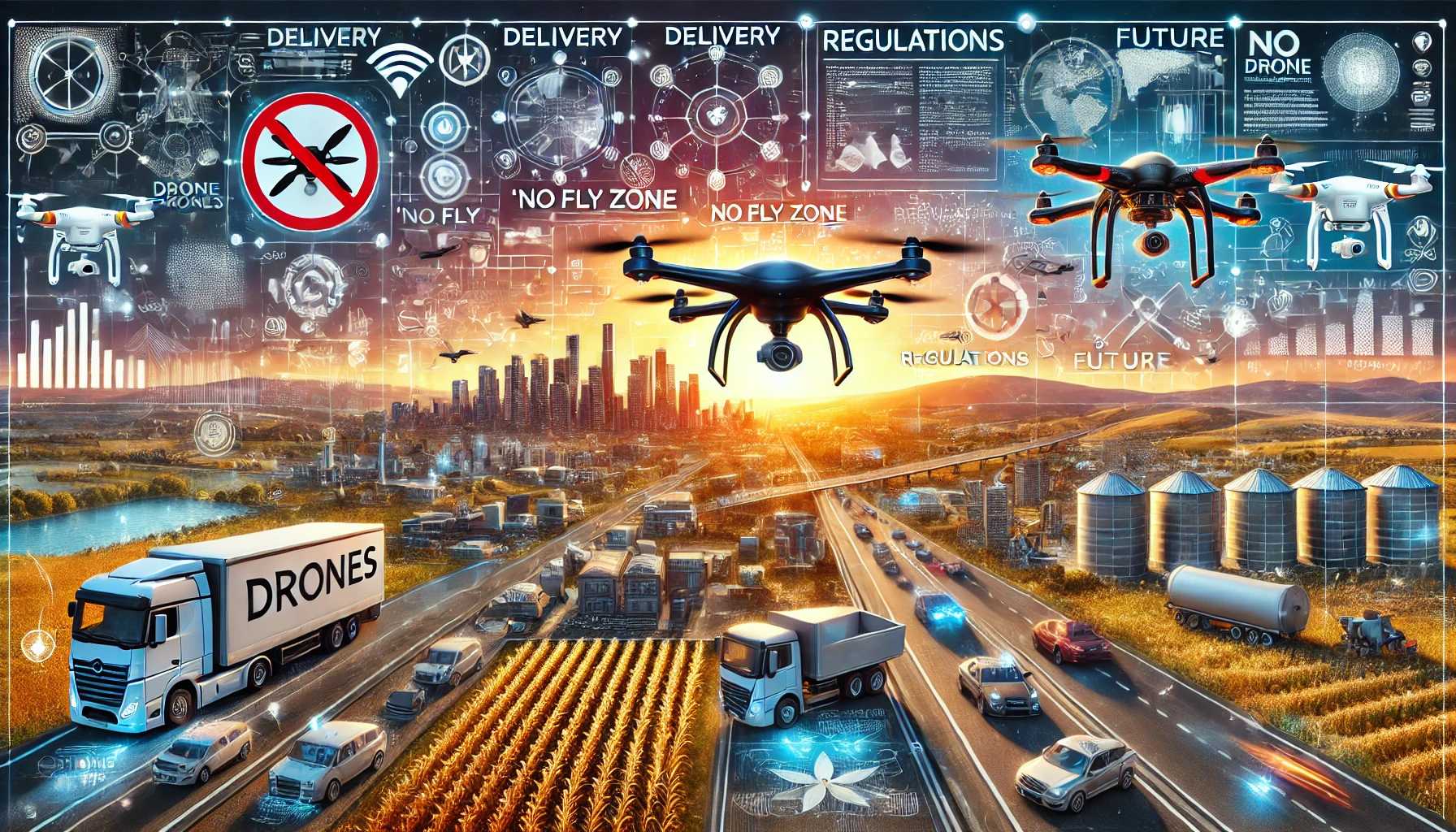Drones: Uses, Regulations, and Future Trends
Drones, or unmanned aerial vehicles (UAVs), have rapidly evolved from niche gadgets to integral tools in various industries. Their versatility, ease of use, and advancing technology have expanded their applications, leading to significant changes in how businesses and governments operate. This blog post delves into the diverse uses of drones, the regulatory landscape governing their operation, and emerging trends shaping their future.
Diverse Uses of Drones
**1. Aerial Photography and Videography:
- Media and Entertainment: Drones have revolutionized aerial photography and videography, offering filmmakers and photographers new perspectives and creative possibilities. High-quality cameras and stabilization technologies enable stunning aerial shots for movies, documentaries, and advertisements.
- Real Estate: Real estate agents use drones to capture aerial footage of properties, providing potential buyers with immersive virtual tours and a comprehensive view of the property’s layout and surroundings.
**2. Agriculture:
- Crop Monitoring: Drones equipped with multispectral sensors and cameras monitor crop health, identify areas of stress, and optimize irrigation and fertilization practices. This precision agriculture approach increases yields and reduces resource waste.
- Pest Management: Farmers use drones to detect pest infestations early, allowing for targeted pest control measures and minimizing crop damage.
**3. Infrastructure Inspection:
- Energy Sector: Drones inspect power lines, wind turbines, and solar panels, identifying maintenance needs without risking human safety. Thermal imaging helps detect faults and inefficiencies in energy systems.
- Construction: Construction companies use drones for site surveying, progress monitoring, and creating accurate 3D models. Drones improve project management by providing real-time data and reducing the need for manual inspections.
**4. Emergency Response:
- Search and Rescue: Drones assist in search and rescue operations by covering large areas quickly and accessing difficult terrain. Equipped with thermal cameras, they locate missing persons in challenging conditions.
- Disaster Management: During natural disasters, drones assess damage, identify safe routes for responders, and deliver essential supplies to isolated areas.
**5. Logistics and Delivery:
- Parcel Delivery: Companies like Amazon and UPS are exploring drone delivery services to enhance last-mile delivery efficiency. Drones can deliver packages quickly, reducing delivery times and congestion in urban areas.
- Medical Supplies: Drones transport medical supplies, blood samples, and vaccines to remote or inaccessible regions, improving healthcare delivery and response times.
Regulatory Landscape
**1. Federal Aviation Administration (FAA) Regulations (U.S.):
- Part 107: The FAA's Part 107 regulations govern the commercial use of drones in the U.S. Operators must pass a knowledge test to obtain a remote pilot certificate and adhere to rules regarding flight altitude, line of sight, and no-fly zones.
- Remote Identification: The FAA requires most drones to have remote identification capabilities, allowing authorities to track and identify drones in real-time for security and safety purposes.
**2. European Union Aviation Safety Agency (EASA) Regulations:
- Open, Specific, and Certified Categories: EASA classifies drone operations into three categories based on risk. The "open" category covers low-risk operations, the "specific" category requires risk assessments, and the "certified" category involves complex operations akin to manned aviation.
- UAS Operator Registration: Drone operators in the EU must register their UAVs and obtain operator IDs, enhancing accountability and safety in drone operations.
**3. Other Global Regulations:
- Canada: Transport Canada regulates drone use under the Canadian Aviation Regulations. Commercial operators must obtain a Special Flight Operations Certificate (SFOC) for complex operations.
- Australia: The Civil Aviation Safety Authority (CASA) oversees drone operations. Operators must obtain a Remote Pilot Licence (RePL) for commercial use and follow strict guidelines for safe drone use.
Future Trends
**1. Autonomous Drones:
- AI and Machine Learning: Advances in AI and machine learning are driving the development of fully autonomous drones capable of complex decision-making and navigation without human intervention. These drones can perform tasks such as mapping, inspection, and delivery with greater efficiency and accuracy.
- Swarm Technology: Swarm technology enables multiple drones to operate collaboratively, communicating and coordinating with each other to accomplish tasks such as large-scale inspections, search and rescue operations, and agricultural monitoring.
**2. Urban Air Mobility (UAM):
- Passenger Drones: Companies are developing passenger drones or air taxis to revolutionize urban transportation. These electric vertical takeoff and landing (eVTOL) aircraft promise to reduce traffic congestion and provide efficient, on-demand air travel within cities.
- Infrastructure Development: The growth of UAM requires significant infrastructure development, including vertiports, air traffic management systems, and regulatory frameworks to ensure safe and efficient operations.
**3. Enhanced Drone Capabilities:
- Improved Battery Life: Advances in battery technology are extending drone flight times, enabling longer missions and greater operational range. Hydrogen fuel cells and solar-powered drones offer promising alternatives for sustained flight.
- Advanced Sensors and Payloads: Drones are being equipped with advanced sensors and payloads, such as LiDAR, thermal cameras, and high-resolution imaging systems, expanding their applications in areas like precision agriculture, environmental monitoring, and infrastructure inspection.
**4. Regulatory Evolution:
- International Standards: Efforts are underway to harmonize drone regulations internationally, facilitating cross-border operations and global drone commerce. Organizations like the International Civil Aviation Organization (ICAO) are working on establishing global standards for drone operations.
- Flexible Regulations: As drone technology evolves, regulatory bodies are adapting to create flexible frameworks that balance innovation with safety and security. This includes developing risk-based approaches to regulation and integrating drones into existing airspace management systems.
Conclusion
The rapid advancement of drone technology presents exciting opportunities across various sectors, from agriculture and logistics to emergency response and urban mobility. However, as the use of drones expands, ensuring their safe, secure, and ethical operation becomes paramount. Regulatory frameworks are evolving to address these challenges, fostering an environment where innovation can thrive while mitigating risks.
As we look to the future, the continued integration of AI, advancements in battery and sensor technology, and the development of autonomous systems will drive the next wave of drone innovation. By staying informed about regulatory changes and embracing emerging trends, businesses and governments can harness the full potential of drones to enhance efficiency, safety, and sustainability in their operations.









